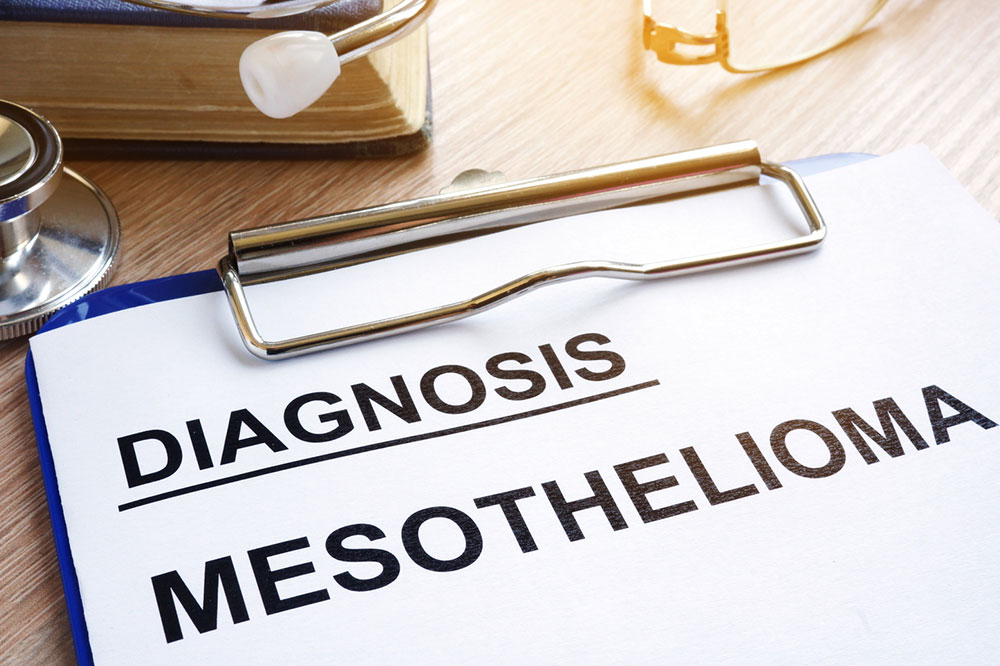
Mesothelioma – Causes, symptoms, and management
Mesothelioma is rare cancer affecting the thin lining surrounding internal organs, also known as the mesothelium. The condition is said to be related to asbestos exposure. It can cause symptoms such as chest pain, shortness of breath, and dry cough. Because of the commonness of the symptoms and the aggressiveness of the condition, mesothelioma often goes undiagnosed till its advanced stages. It is important to consult a doctor to seek proper treatment and manage the symptoms better.
Signs and symptoms
Pleural mesothelioma
This form affects the lining of the lungs and presents with a persistent cough, chest pain, shortness of breath, fatigue, and difficulty swallowing. The symptoms may initially be mistaken for common respiratory ailments, underscoring the importance of vigilant monitoring.
Peritoneal mesothelioma
Targeting the abdominal lining, this type manifests through symptoms like abdominal pain, swelling, nausea, and changes in bowel habits. Early detection is crucial for effective management.
Pericardial mesothelioma
As the name suggests, pericardial mesothelioma is a type of cancer that affects the lining surrounding the heart. It is an exceedingly rare kind of cancer. The symptoms include chest pain, irregular heartbeat, difficulty breathing, and fatigue, often mimicking other heart-related conditions.
Causes
Asbestos, a naturally occurring mineral made up of microscopic fibers, is a primary cause of mesothelioma. The mineral is extensively used across industries because of its heat resistance, durability, and insulation properties. When asbestos-containing materials are disturbed, tiny asbestos fibers are released into the air and can be inhaled or ingested, leading to serious health consequences.
Occupational exposure
Construction, shipbuilding, mining, manufacturing, and insulation installation workers face a higher risk of asbestos exposure. These occupations involve handling asbestos-containing materials directly or working in environments where asbestos fibers are prevalent.
Environmental exposure
This includes people living close to asbestos factories, mines, and other industries that could have asbestos fibers in their environment. People residing in older buildings with deteriorating asbestos-containing materials are also at risk of environmental exposure.
Secondary exposure
Secondary exposure occurs when individuals come into contact with asbestos fibers indirectly through contaminated clothing or equipment or by living with individuals who work in occupations with high asbestos exposure.
Vermiculite contamination
Some vermiculite deposits, particularly those sourced from Libby, Montana, were found to contain asbestos fibers. Vermiculite was widely used in insulation and gardening products. People who handled or lived in areas where asbestos-contaminated vermiculite was used are at risk of exposure.
Treatment options
Surgery
Surgical interventions like pleurectomy/decortication (P/D) or extrapleural pneumonectomy (EPP) may be employed for pleural mesothelioma, while peritoneal mesothelioma may be treated with cytoreductive surgery combined with heated intraperitoneal chemotherapy (HIPEC). These procedures aim to remove as much cancerous tissue as possible.
Chemotherapy
Chemotherapeutic treatment can be administered intravenously or orally. The treatment is designed to target and destroy cancer cells and help improve the patient’s quality of life. Chemotherapy can be employed as a standalone treatment or in combination with other therapies and surgery to increase its effectiveness.
Radiation therapy
High-energy radiation beams are directed at the tumor site to shrink tumors, alleviate pain, and improve the overall quality of life for patients.
Immunotherapy
This innovative treatment avenue harnesses the power of the immune system to identify and combat cancer cells, offering newfound hope to mesothelioma patients.
Targeted therapy
Targeted therapies are designed to attack specific genetic mutations within cancer cells, impeding their growth and spread.




